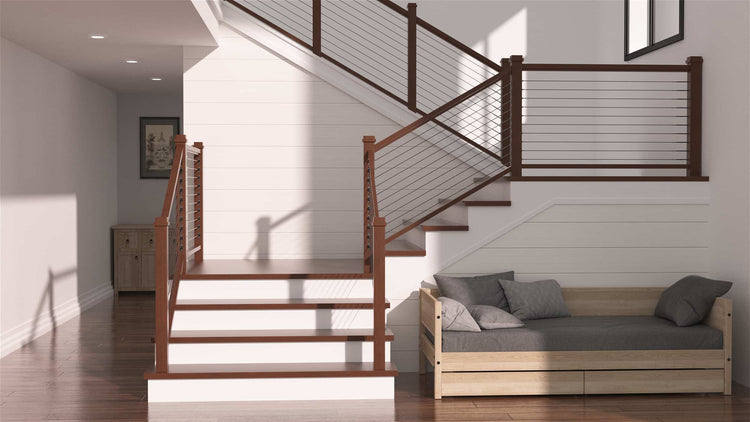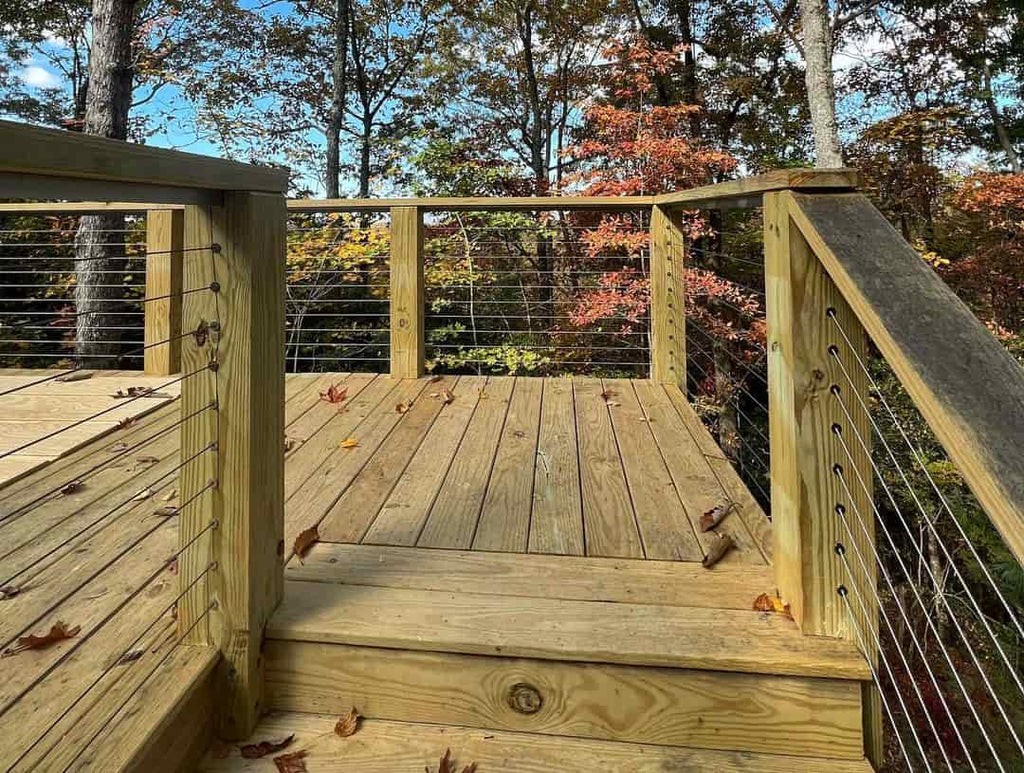DIY Guide to Properly Tensioning Cable Railing Kits on Wood Posts

Horizontal cable railings have become a popular choice for deck railing, seamlessly blending modern aesthetics with unobstructed views. These sleek railings not only enhance curb appeal but also provide breathtaking vistas of beaches, mountains, or gardens. While the contemporary look is appealing, it's crucial to address safety concerns, particularly regarding cable tension. Incorrectly tensioned cables pose fall risks, making proper installation and maintenance essential for ensuring safety and compliance with regulations.
Why Proper Cable Tension Matters
Ensuring the correct tension in cable railings is vital for long-lasting safety. Loose cables compromise the security of the railing system, potentially leading to accidents. This guide offers valuable insights into achieving the right tension for cable railings on wood posts, providing a step-by-step approach to avoid common issues.

Key Considerations When Installing Cable Railing on Wood Posts
1. Choose the Right Material for Posts
Selecting the appropriate material for your wood posts is crucial. Opt for hardwood or pressure-treated lumber as they withstand outdoor elements, preventing issues like bending, cracking, or splintering over time. Avoid softwoods like untreated cedar or pine, which lack the durability needed for lasting outdoor structures.
2. Avoid Over-Tightening
Over-tightening cables can lead to damage on your deck railing. Follow the standard of a 4-inch diameter sphere test – cables should be tight enough to resist the passage of the sphere without excessive force. If post bending occurs, make small tension adjustments in the proper sequence to achieve consistent tension.
3. Ensure Adequate Tightening
Sagging cables not only affect the appearance of your deck but also compromise safety. Inspect hardware connections, tighten any loose ones, and re-tension all cables gently in the prescribed order. This ensures a snug fit without drooping, preserving the aesthetic appeal of your deck while meeting safety standards.
How Much Tension is Ideal?
The International Building Code (IBC) mandates a cable tension of 200 pounds to maintain proper spacing and prevent distortion of rails and posts. Aim for cables as taut as guitar strings – firm but not excessively tight. To confirm compliance, use a cable gauge or seek professional inspection to ensure your railing meets safety standards without risking damage.

Simplifying Cable Railing Installation with Muzata
Installing cable railings may seem challenging, but Muzata offers simplified solutions with their Pre-Designed Cable Railing Systems. These DIY-friendly packages include detailed instructions for a smooth installation process. Choose from a variety of ready-made kits that comply with building codes, ensuring a secure and visually appealing railing system.
